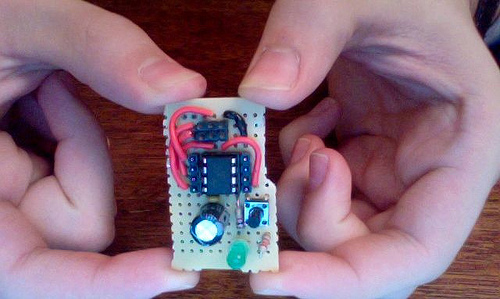
I recently decided to do some development for the ATTiny85s I have laying around. I added a few of these to a Sparkfun order about a year ago to use up my Free Day money, but since I forgot about them and moved on to other electronics pursuits. However, I finally decided to start programming them and at the same time I decided to improve my prototyping skills, develop a really nice development board for them, and learn KiCAD.
The current version works and I was able to program my ATTiny85 using my Pololu AVRISP v2 Programmer and Arduino 1.0. I was able to program using Arduino thanks to the High-Low Tech Lab over at the MIT Media Lab. While I plan on programming these microcontrollers using C, my familiarity with Arduino allowed me to rapidly test my design and make sure that everything loads up onto the microcontroller just right.
More video and coverage coming later!
Links: